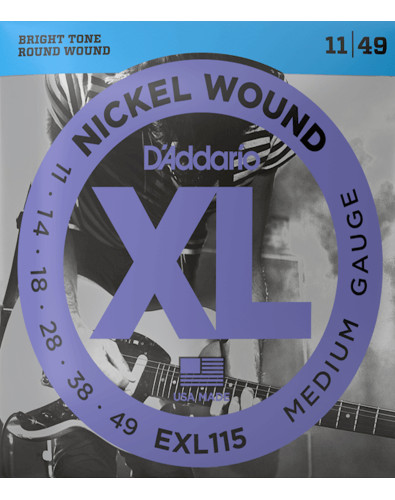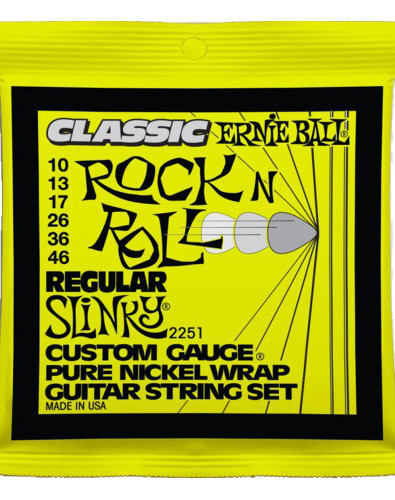- News
- 18 likes
- 1679 views
- 0 comments

Choosing the right string gauge is no small decision. For many musicians and luthiers, finding the ideal balance between tension, tuning, and scale can make the difference between a comfortable, resonant, and expressive instrument, and one that feels loose or difficult to play.
This article is designed to help you make more informed decisions, whether you're looking to improve comfort or simply adapt to a new type of music or instrument construction.
The ideal tension: between firmness and expressiveness
Tension is the force that strings exert on the instrument. It is directly related to gauge (thickness), scale, and tuning, and has a direct effect on the feel of the instrument.
More tension means more resistance under your fingers, ideal for players who strum hard or come from a bass background. Less tension can be more comfortable for those seeking speed or doing frequent bending.
A good starting point for a guitar in standard tuning is usually a 10–46 set, for Fender or Gibson scales. From there, everything depends on how your hands... and your ears respond.
How does your guitar's scale affect string gauge?
The scale is the length of the string (from nut to bridge) that oscillates/vibrates, and while often overlooked, it has a huge technical impact. In practical terms:
On a standard Fender scale guitar (25.5"), the same string will be under more tension than on a slightly shorter scale (such as Gibson, 24.75").
This means that, for the same tuning, a shorter scale requires thicker strings to maintain the same tension and feel in the hand.
For a Drop D tuning, for example, a Fender can remain comfortable with a 10–52 set, while a Gibson might need an 11–54 to avoid a floppy feel on the sixth string.
Tuning types: what changes when you lower the pitch?
Not all tunings exert the same tension on the instrument. Here’s an overview of some of the most common ones, along with their specific characteristics:
E Standard (Standard Tuning)
This is the traditional tuning for electric guitars: E A D G B E. Ideal for 10–46 gauges on Fender or Gibson scale guitars. Most instruments are factory-calibrated for this tuning.
Drop D
Only the sixth string is lowered by one whole step: D A D G B E. Very popular in rock, metal, and grunge. It is recommended to reinforce the sixth string with a thicker gauge.
Eb Standard (Half-Step Down)
All strings are tuned down by a half-step: Eb Ab Db Gb Bb Eb. Used by Hendrix, Stevie Ray Vaughan, Guns N’ Roses, among others.
D Standard
All strings are tuned down one whole step: D G C F A D. Ideal for heavier music. Gauges like 11-48 work well for both Fender and Gibson scales.
Drop C / Drop B
Lower tunings like C G C F A D or B F# B E G# C#. These require thick strings (up to 12–60 or more) and adjustments in the instrument's construction. Very common in modern metal.
In the table below, you’ll find a practical guide with suggested combinations of scale, tuning, and gauge for both guitar and electric bass.
Guitar construction and its impact on string gauge choice
For instrument builders, these factors also come into play:
- The accumulated tension influences the design of the neck (thickness, reinforcements) and the choice of truss rod.
- The bridge and nut, and even tuning machines, should be adjusted for the chosen gauge.
- A tuning change will require adjustments to the truss rod, string height, and intonation.
The ultimate reference table: scale, tuning, and recommended gauges
This table offers suggested combinations for Fender, Gibson, and electric bass guitars, in different tunings. It serves as a basis for experimentation, not a strict rule. Every instrument reacts differently, and every musician has their own preferences.
.jpg)

The perfect gauge: testing, adjustments, and feel
The ideal combination of tension, scale, and tuning is not found in a single formula. It depends on the music style, playing technique, instrument type and setup, and, most importantly, personal preference. However, understanding how these factors interact allows you to make better decisions and communicate your needs more effectively as a guitarist or luthier.
At Maderas Barber, we not only offer high-quality woods and accessories. We also strive to share knowledge that helps musicians and luthiers create more expressive and personalized instruments. If you're experimenting with new tunings or building an instrument from scratch, these technical decisions are part of the soul of the final result.
Iñaki Font - Luthier de Maderas Barber







































